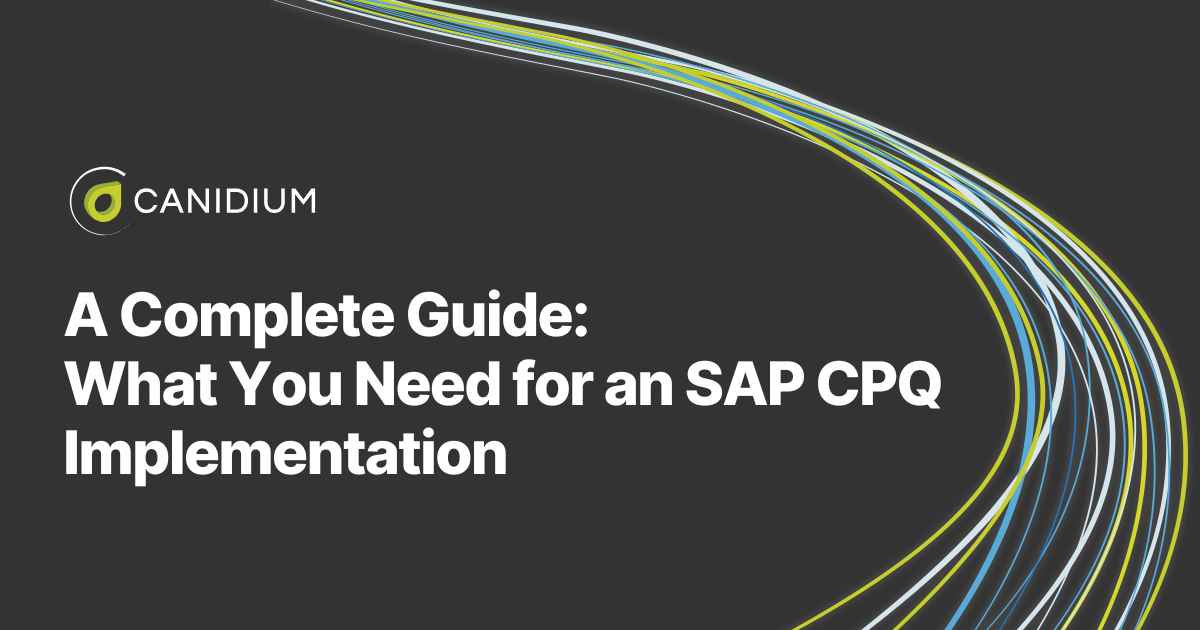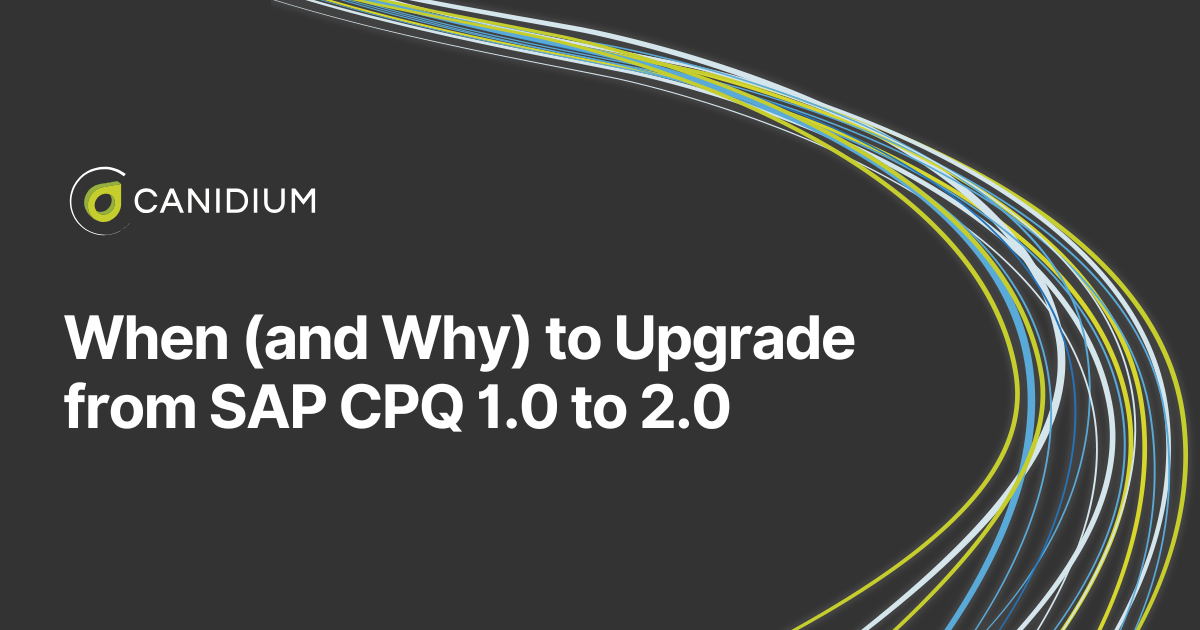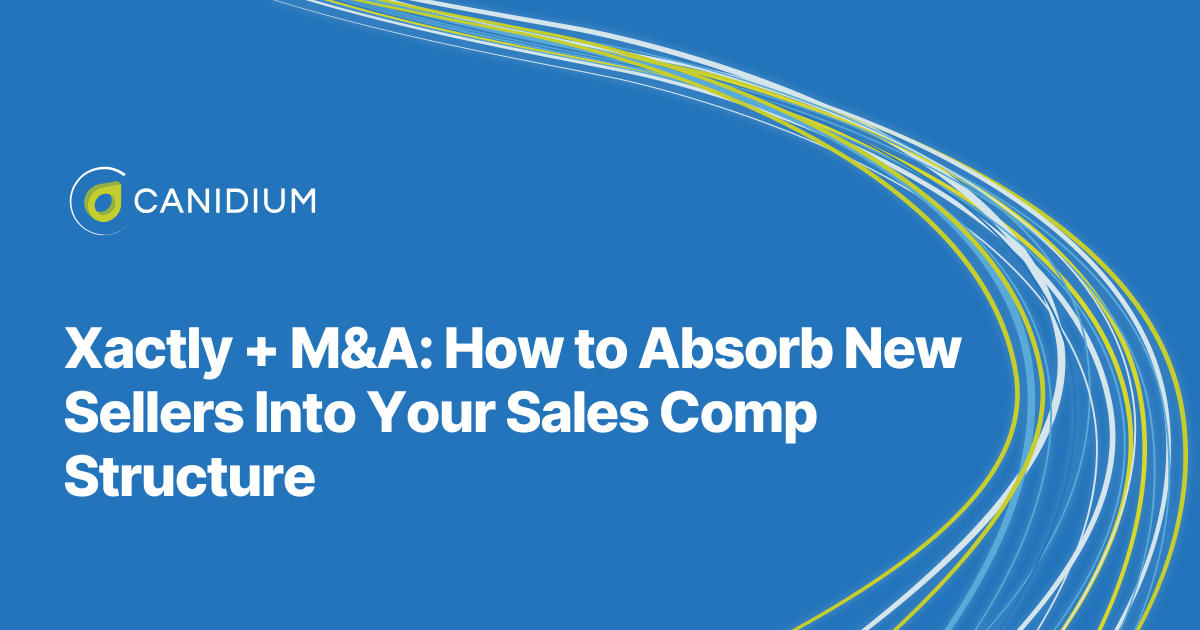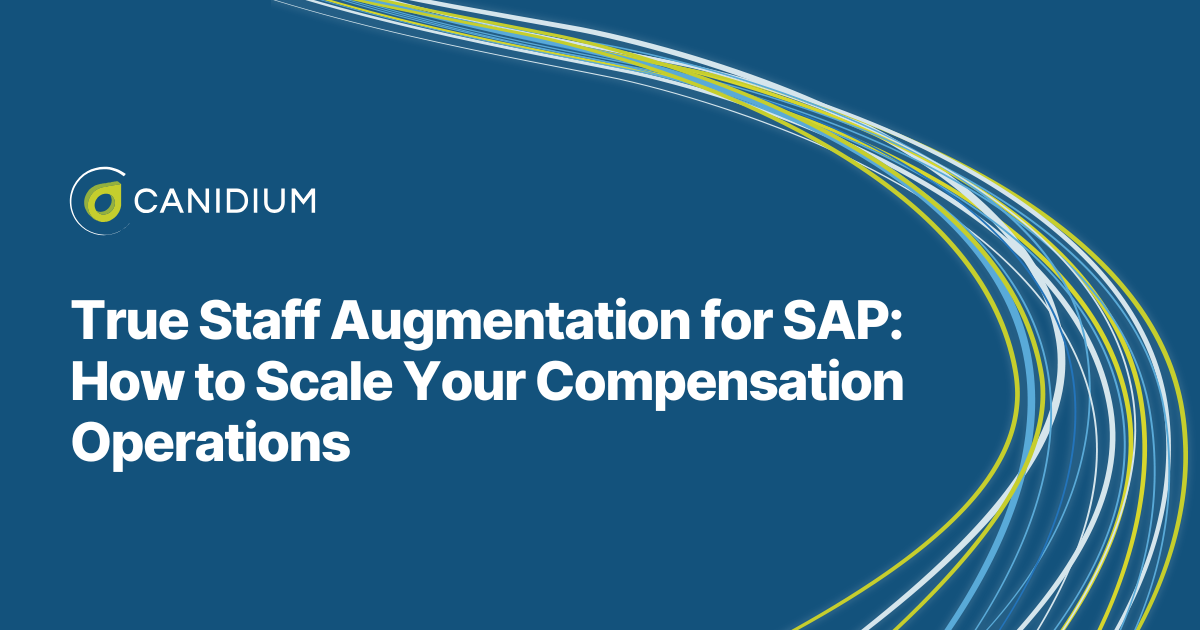Implementing a Configure, Price, Quote (CPQ) solution—whether SAP CPQ or another platform—is a transformational effort. It doesn’t just upgrade a tool; it modernizes how your organization sells, prices, and delivers value to customers. While each implementation is unique, there are consistent phases and challenges that most companies will encounter.
At Canidium, we help businesses prepare for and navigate these steps with clear expectations and structured support. In this article, we outline what to expect during a CPQ implementation, including a closer look at two key areas: data readiness and communicating configuration logic. These areas, when well-prepared, significantly impact the speed and success of implementation.
1. Data Readiness: A Hidden Driver of Project Success
Data is often the least visible but most influential part of a CPQ implementation. Clean, structured, and accessible data underpins the ability of your CPQ solution to configure products, calculate prices, generate accurate quotes, and support analytics. Data issues are also one of the most common sources of implementation delays, so preparing your data upfront is key.
What’s typically required?
- Product Master Data: A complete, up-to-date inventory of your sellable items, product families, and bundles. This should include SKUs, descriptions, attributes, and relationships (e.g., dependencies, exclusions).
- Pricing Data: Base pricing by product or SKU, discount structures, volume tiers, region- or customer-specific pricing, and any promotional rules that affect how prices are applied.
- Customer Data: For organizations integrating CPQ with CRM or ERP systems, ensuring customer hierarchies, account types, and segmentation data is clean is essential for quote generation and approvals.
- Approval and Workflow Logic: Any rules tied to pricing thresholds, margin floors, or deal sizes need to be defined and documented so they can be replicated or enhanced in the system.
What to expect during implementation:
- Data audits and cleansing: Expect early-stage work to involve identifying missing, duplicated, or outdated records and resolving those issues collaboratively.
- Migration planning: You’ll need to map existing data fields to the CPQ data model. If the implementation is integrated with SAP S/4HANA or Salesforce, this also includes data flow design and transformation logic.
- Master data governance discussions: CPQ projects often expose larger data ownership questions—who maintains what data, where it lives, and how often it updates. These discussions, while sometimes outside the project’s scope, are critical to long-term success.
Taking a proactive approach to data readiness is crucial as it significantly reduces the likelihood of encountering rework during the implementation process. By ensuring that your data is clean, structured, and accessible from the outset, you lay the groundwork for a smoother transition and a more efficient go-live phase. This preparation not only streamlines the integration of your CPQ solution but also enhances the overall quality and reliability of the system. As a result, your organization can achieve a faster deployment, minimizing disruptions and allowing you to realize the benefits of the new system more quickly and effectively.
2. Communicating Configuration Logic: Bridging Business Knowledge and System Design
Product configuration is often the most powerful—and most complex—aspect of a CPQ solution. It’s also where communication gaps can lead to frustration. A CPQ tool is only as effective as the configuration logic it receives, and capturing that logic accurately requires collaboration between business experts and technical teams.
Why this matters:
Configuration logic controls how users configure products on quotes. It defines which options are compatible, which features are required, what rules should trigger warnings or errors, and how different selections affect pricing. If this logic is incomplete or misunderstood, the result can be an unusable system.
What to prepare and expect:
- Business-driven configuration maps: These are often visual flowcharts or decision trees that show how users build product bundles, select features, or apply upgrades and accessories. This gives your implementation partner a baseline to work from.
- Rule definitions in plain language: Start by documenting rules in business terms. For example: “If Product A is selected, Product B must also be included,” or “If the quote is for a public sector customer, apply the government pricing tier.”
- Collaboration during modeling: Configuration logic is best refined in working sessions. Expect hands-on meetings where your team walks through edge cases, exception handling, and regional or channel variations.
- Iterative validation: CPQ configuration models are typically built and reviewed in cycles. You’ll see demos or sandbox previews where you validate whether the logic behaves as expected and flag areas for adjustment.
- Fallback options for tribal knowledge: If some configuration knowledge exists only in certain people’s heads (common in long-standing sales organizations), implementation partners will help extract and translate it into repeatable rules.
Effective communication and comprehensive documentation are crucial in ensuring that the system accurately reflects and aligns with your business operations. By meticulously capturing and conveying the intricate details of your processes, you enable the system to function as an authentic extension of your organizational practices, thereby enhancing its utility and effectiveness.
Other Key Implementation Milestones to Expect
While data readiness and configuration logic are foundational in a CPQ implementation, the process is comprehensive and includes several additional critical stages. These stages ensure the CPQ system is effectively integrated and optimized to deliver maximum value. Each stage is crucial to the implementation's success, covering aspects from initial planning to final deployment. This journey involves meticulous planning, collaboration, and execution, ensuring the CPQ system aligns with the organization's strategic objectives.
Solution Design & Requirements Gathering
Functional specification documents are created and signed off to provide a comprehensive blueprint for the CPQ system. These documents detail the technical and functional requirements, serving as a reference point throughout the implementation process. By obtaining sign-off from all relevant parties, the project team ensures that there is a shared understanding of the system's capabilities and limitations.System Build
System Build involves the configuration of product and pricing models, which are tailored to reflect the unique offerings and pricing strategies of the organization. This phase also includes integration development, where the CPQ system is connected with other enterprise systems such as CRM, ERP, and eSignature platforms, ensuring seamless data flow and process automation. If required, custom UI/UX components are developed to enhance user experience and meet specific business needs.Testing & Validation
Testing & Validation is a crucial phase where the system undergoes rigorous testing to ensure it meets all specified requirements. Unit testing is conducted by the system integrator (SI) partner to verify individual components, while user acceptance testing (UAT) involves internal stakeholders who validate the system's functionality in real-world scenarios. Test case documentation is meticulously maintained, and any identified issues are addressed through a structured bug triage process.Training & Change Management
Training & Change Management is vital for ensuring that all users are equipped to effectively utilize the new system. Admin training sessions are conducted to enable future maintenance and system management. Sales rep enablement materials and sessions are provided to ensure that the sales team can leverage the CPQ system to its full potential. Comprehensive communication plans are developed to facilitate a smooth rollout and provide ongoing support to users.Go-Live & Hypercare
Go-Live & Hypercare marks the transition to the live environment, where final data migration and production deployment take place. During the initial weeks, live system monitoring is conducted to promptly identify and resolve any issues that arise. A handoff to the internal team or managed services provider is executed to ensure continued support and system optimization. This phase is critical for ensuring that the CPQ system operates effectively and delivers the anticipated benefits to the organization.CPQ Implementation: Clarity, Preparation, and Partnership
CPQ implementation success hinges on clarity—clarity about your product and pricing logic, clarity around your data landscape, and clarity in communication between your business and your system integrator. At Canidium, we believe that successful projects are built on active collaboration, realistic planning, and a shared understanding of how technology supports sales.
By preparing your data and clearly articulating your configuration rules, you lay a strong foundation for the system you’re building. These efforts not only reduce risk but also accelerate ROI by ensuring the tool aligns with your actual business needs.
If you're considering a CPQ implementation or are about to kick one off, we’re happy to help you assess your readiness and map out the next steps with confidence.








